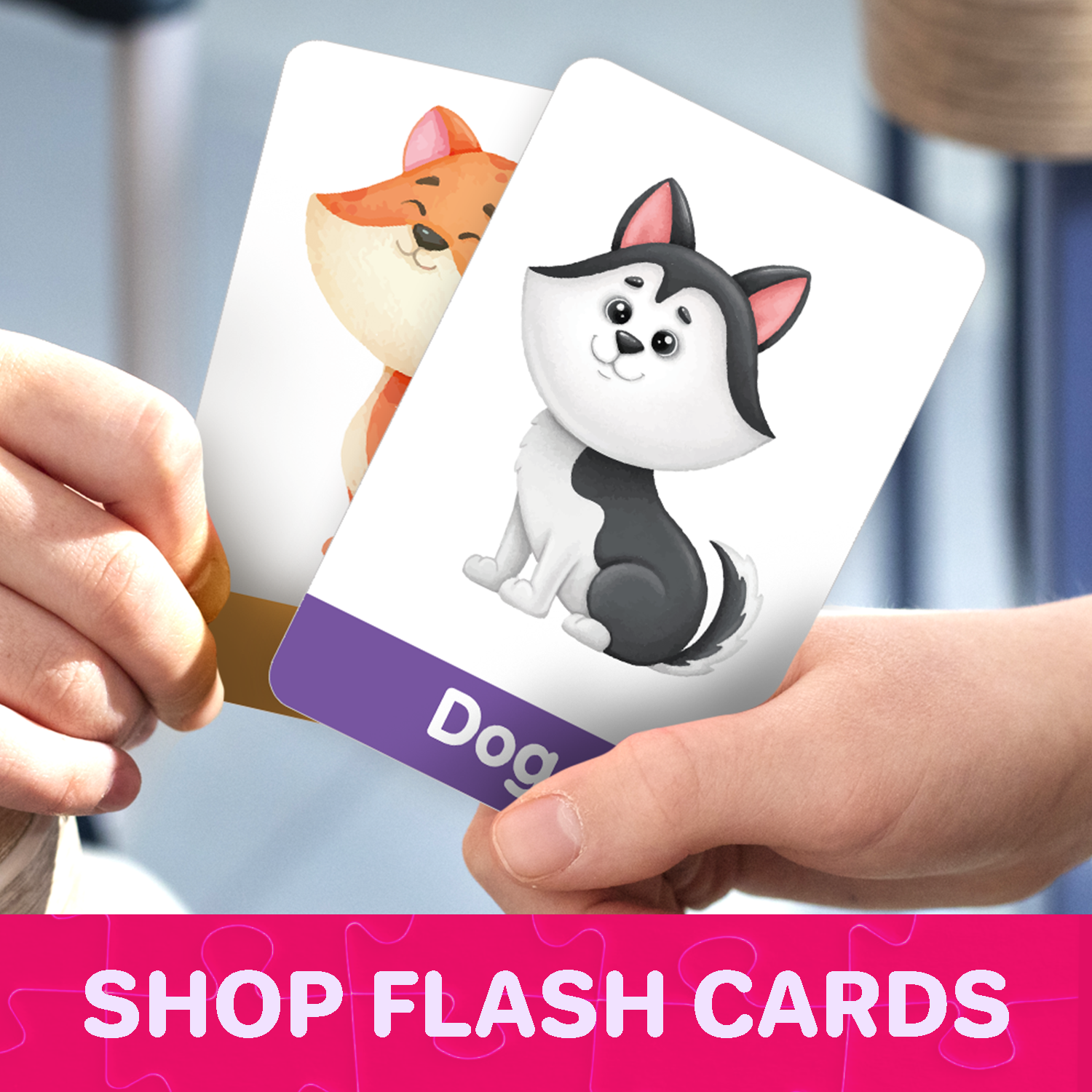As educators, we are always looking for ways to make our teaching strategies more relevant, more innovative, more effective, and, of course, more engaging. (That’s the teacher codeword for “fun!”)
And all the research agrees that puzzles are one of the most versatile and impactful educational tools that can be used in the classroom. Puzzles are:
- Relevant: They foster cognitive development and improve fine motor skills.
- Innovative: Magnetic puzzles can be taken on the go. Seek-and-Find puzzles add the fun of hunting for pictures after the puzzles have been made.
- Effective: They provide hands-on learning, support collaboration, and encourage critical thinking.
- Fun: Kids love that puzzles look like toys; they are an excellent example of play-based learning.
Educators around the world agree: puzzles are great, and we love them in our classroom!
But…how do we use them in our classroom?
What strategies can teachers and parents use to get the most out of their puzzles?
Read below for strategies on how to integrate puzzles into your classroom effectively. Whether you’re a preschool teacher, a middle school math teacher, or a mom homeschooling multiple grades, you’ll find that with the right strategies, puzzles can play a key role in enhancing learning outcomes.
7 Strategies for Integrating Puzzles in the Classroom
1. Use Puzzles as a Morning Warm-Up:
In your classroom, you can set up a puzzle station in one area of the room that children are taught to stop by when they walk in. Or if you have enough sets, you can place a different puzzle on each table that students can tackle as soon as they come in.
This routine can help ease students into the day, sparking focus and curiosity without the pressure of diving into a big lesson right away. Your students will be excited to walk into your classroom when an educational tool (disguised as a toy!) is greeting them at their desks.
Tip: Do you want to build student trust? Take a survey of your students' interests, asking specifically what they enjoy playing with at home or watching on their tv. Find out what interests them when they have free time and can let their imagination wonder. Then, incorporate their interests into the puzzles you have available in your classroom! For example, if they like space, get a space themed puzzle, and if they like castles and royalty, find a princess puzzle.
2. Incorporate Puzzles into Lesson Plans:
Maybe you've bought into the idea of having puzzles in the classroom, so you take the initiative, spend your hard earned, educator money on a few sets as an investment, and now they're sitting on your classroom shelves, shiny and new. A few months go by and you notice that your students aren't really picking them up, maybe a few stragglers on occasion notice them and will play with a set during free time. This isn't what you necessarily imagined, but you aren't quite sure how to use them effectively in the lessons you've already written.
Well, here are some non-traditional teaching ideas for your puzzle sets:
For the science teachers: Do you have a space unit coming up? Maybe you want to teach about the order of the planets in our Milky Way galaxy? A space themed puzzle, specifically one that depicts the planets in order, would be an excellent visual that can open the unit or be used as a formative assessment. Students will have to show mastery of the content in order to place the planets in the correct order, and the visual picture at the end is a great study aide.
Are you a geography or social studies teacher? Puzzles often depict geographical areas, countries, or states, with the border lines as the puzzle piece outlines. Think about how much more likely a student will remember the European capitals if they had to piece together each country which visually starred the location of their capitals. Rather than just being told the information via a lecture with a map projection on the wall, students are able to hand manipulate and maneuver the information they are actively learning.
For the language teachers: Check the books you currently have and make a list of the thematic elements. Then cross reference those themes to puzzle themes on the market. Allow your students to use these puzzles as physical building blocks for writing their stories or connecting to the stories they have already read in class.
There are so many more ways to use puzzles into the lessons you already have, but hopefully these suggestions can help warm up your own educator creativity!
3. Puzzle Stations for Early Finishers:
Every veteran teacher knows one of these students: the one who races through a worksheet or exam—and yes, even with correct answers—and finds themself sitting at their desk with nothing to do while the rest of the class continues on the assignment.
It's a classroom management question we all seek to answer: what do we do with students who finish their work early and need something to keep them engaged?
Having a designated "Puzzle Station" is a perfect solution! To set one up, choose an empty spot in your classroom and stock it with jigsaw puzzles, brain teasers, or logic puzzles that they can work on independently or quietly with a buddy.
Tip: As with any early finisher activity, in order to avoid the line of students claiming, "I'm done, what do I do now," make sure you've set the routine ahead of time keep the classroom quiet and focused for those still working on their assignments.
4. Create Puzzle Challenges for Group Work:
Do you enjoy a collaborative classroom in which students work together often? Here are some teaching ideas for puzzle group work:
First, create small groups of 3-4 kids as puzzle teams. Because of the nature of group work and how you'll need to rely on group dynamics, it's recommended that you as a teacher choose the group members so that you can intentionally split students by developmental level or with behavior management in mind.
Next, challenge each team to solve a puzzle together as quickly as they can. For example, groups must solve a large jigsaw puzzle with over 100 pieces or maybe a set of tangrams, moving quickly to make the best time.
Finally, encourage each group to talk through their ideas, delegate tasks, maybe even section off portions of the puzzle to work on. Yes, your classrom will get loud and exciting!
Tip: Do you want to keep competition out of the classroom but like the idea of a group challenge? Instead of having students compete head-to-head in a speed challenge, causing potential behavior problems, you can keep a record of each group's time and see if every week or month, they can work together faster to beat their previous time.
5. Puzzle Storytime:
Do you love reading to your students? You can combine reading and puzzle-solving by pairing books to corresponding themed puzzles.
After reading a story, just provide a puzzle that represents something from the book (like a character, the setting, or key events). Students can work independently or as a group to complete this type of puzzle.
While they work on the puzzle, encourage the kids to discuss how the puzzle pieces connect to the story, which reinforces comprehension and allows for re-telling and story interpretation.
This is a unique way to connect hearing a story to visual and tactile learning; this type of activity reinforcement will later help in story recall.
6. Use Puzzles to Build Fine Motor Skills:
Do you have little ones that you're educating? Perhaps they've started walking or crawling?
Puzzles with thick, wooden, durable pieces are perfect for little hands that might lack finesse in movement and placement. Or, imagine a 3-year-old or 4-year-old with a peg puzzle, the sets with small knobs or pegs. These types of puzzles are perfect for toddlers and preschoolers who require an easy grip to be able to manipulate into the corresponding slots.
This kind of activity is engaging and supports the development of the physical skills young kids will eventually need for writing, coloring, and using scissors or any other delicate classroom tools.
7. Encourage Puzzle Creation by Students:
Once students get the hang of solving puzzles, let them try creating their own!
Your students could:
- Design, draw, or paint a themed picture that are then cut up into puzzle pieces.
- Be a cartographer and make pieces to a map that need to be put back together.
- Create crossword puzzles with vocabulary words
- Take a photo (of their family, friends, setting, etc.) and transform it into a puzzle.
As a teacher, you'll be surprised at how inventive they can be, and they'll get a real sense of pride from sharing their creations with their peers.
Add Some Puzzles into Your Lessons Now!
Puzzles offer so much more than just a fun break from traditional learning—if used to their full potential, they are powerful tools that can support a wide range of developmental skills.
Who knows, maybe a new puzzle just might be the missing piece to your classroom! Bring creativity and learning into your classroom today! Explore our wide range of educational puzzles and inspire your students.
-------
Author:
Kat Martin, with an M.A. in Teaching & Instruction, specializes in crafting engaging educational content. She combines her passion for writing and expertise in curriculum development to creatively market family resources and bring learning experiences to life.













Leave a comment
This site is protected by hCaptcha and the hCaptcha Privacy Policy and Terms of Service apply.